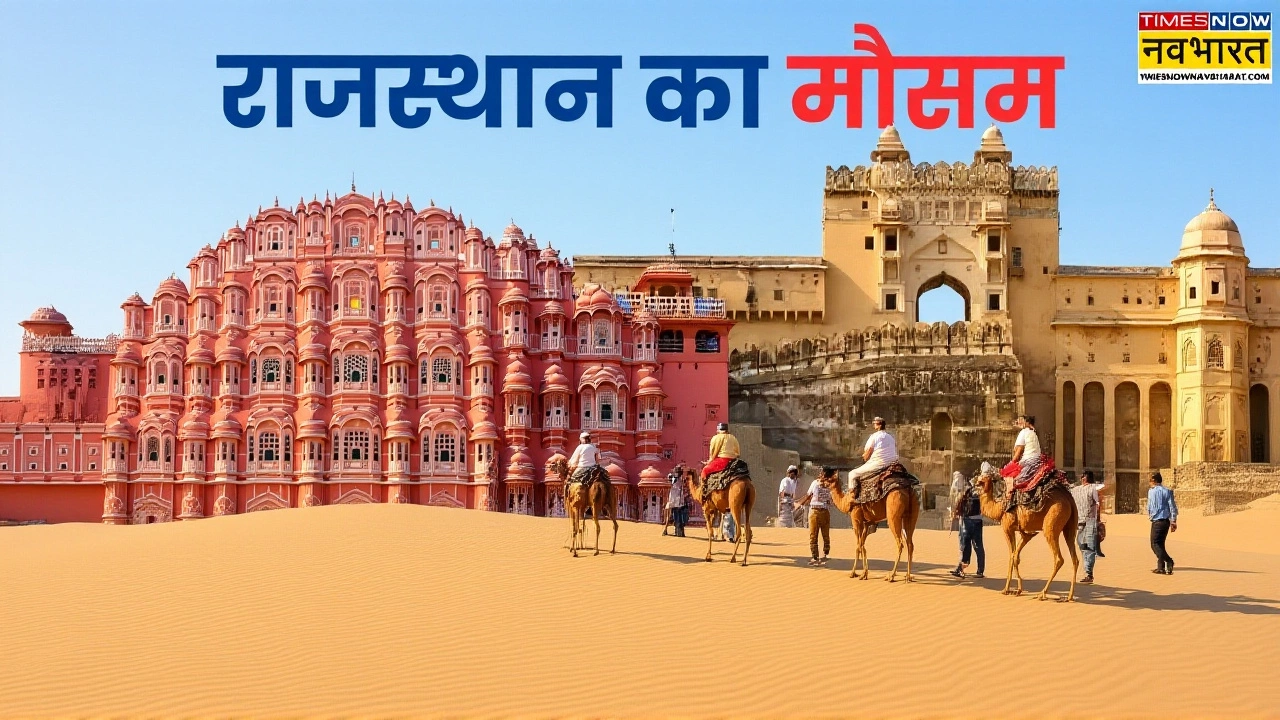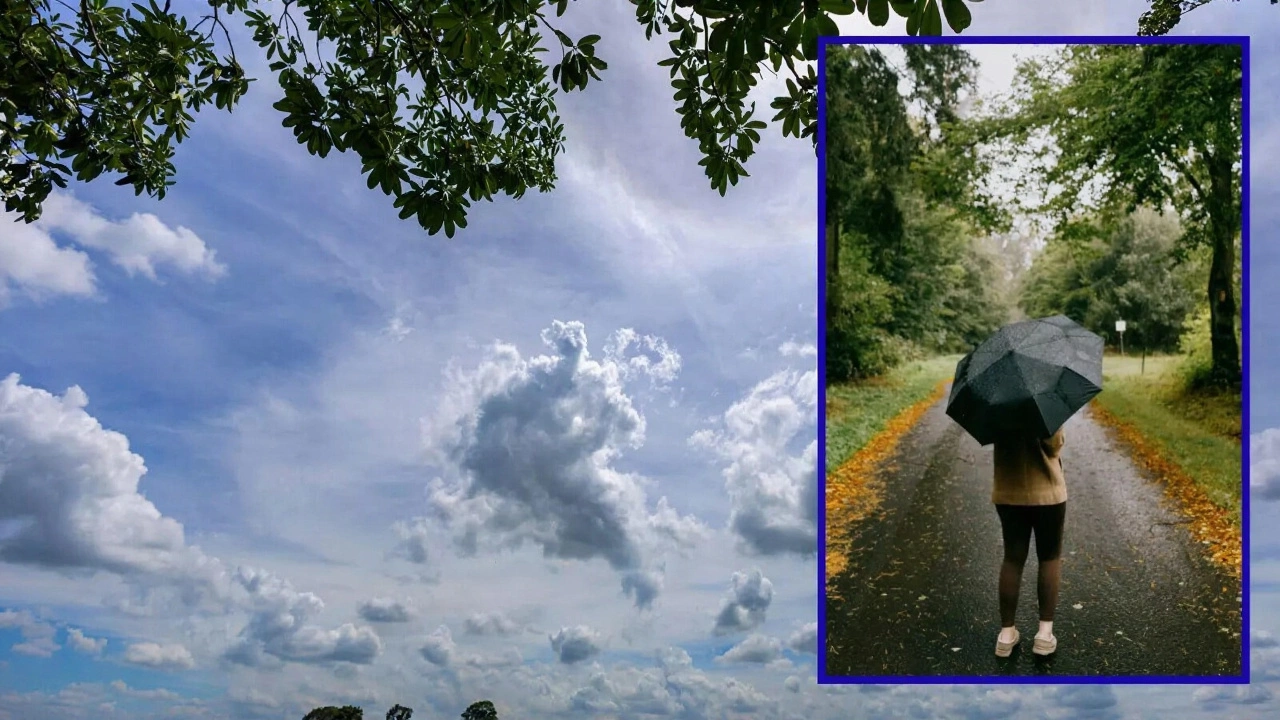When the sun rose over Dausa on Thursday, October 30, 2025, drivers found themselves crawling along National Highway 21 like ants through molasses. Visibility had plunged below 100 meters — less than the length of a football field — after overnight rain turned the air into a thick, clinging fog. It wasn’t just a nuisance. It was a hazard. Cars stalled. Trucks swerved. Two minor collisions were reported before 9 a.m., and buses were delayed for hours. The India Meteorological Department (IMD) had warned of this, issuing a Yellow alert at 8:00 AM IST. But few expected it to be this bad, this early.
Why This Fog Isn’t Just a Seasonal Oddity
This wasn’t your typical winter fog. October is still monsoon season in much of northern India, but the combination of rainfall followed by sudden cooling is unusual. The rain that fell overnight wasn’t just ordinary showers. It was the last gasp of Cyclone Montha — a system that had churned across the Arabian Sea before weakening into a depression. Its remnants, combined with a fresh low-pressure zone over western India, dumped moisture across 24 districts of Rajasthan. By morning, the damp ground met cool, stagnant air, and boom: dense fog.The IMD’s forecast confirmed it: this pattern won’t vanish by noon. Fog is expected to linger through Saturday, with intermittent showers continuing in the southern and eastern districts. What’s more alarming? Temperatures have nosedived. In Bhilwara, the maximum temperature hit just 19.6°C — 13.7°C below the seasonal average. In Jaipur, it dropped from 32°C to 24°C in 24 hours. Locals in woolen shawls and jackets are now a common sight — not in December, but in late October.
Who’s Affected — And How Badly
The IMD’s alert covers a wide swath: Nagaur, Barmer, Jodhpur, Pali, Ajmer, Sirohi, Udaipur, Bhilwara, Chittorgarh, Rajsamand, Jhunjhunu, Sikar, Tonk, Jaipur, Dausa, Alwar, Bharatpur, Dholpur, Karauli, Sawai Madhopur, Baran, Kota, and Jhalawar.But it’s not just fog. The IMD also warned of thunderstorms with gusty winds up to 30 kmph in 18 of those districts — especially in Kota and Udaipur — where cloudy skies and light showers are expected to last four to five days. Meanwhile, western Rajasthan remains dry, with no alerts issued for Jodhpur, Barmer, or Jalore through November 1.
What the Authorities Are Saying
The IMD’s warning isn’t just a heads-up — it’s a lifeline. At 8:00 AM, they activated a 180-minute Yellow alert for storm and rain across the region. Local police in Dausa set up temporary checkpoints on NH-21, urging drivers to turn on fog lights and reduce speed. “We’ve seen accidents in the past when people think fog will clear by noon,” said Senior Inspector Rajesh Meena. “It doesn’t. You wait. You don’t rush.”Health officials are also on alert. The sudden chill, combined with high humidity, has already triggered a spike in respiratory complaints at government clinics in Jaipur and Alwar. “Children and elderly patients are coming in with wheezing and coughing,” said Dr. Anjali Verma at Alwar District Hospital. “It’s not just the cold — it’s the dampness carrying pollen and dust.”
Electricity boards have issued urgent advisories: unplug non-essential devices. Lightning strikes near Kota damaged three transformers overnight. “We’re not just dealing with traffic,” said a spokesperson from the Rajasthan Power Distribution Corporation. “We’re dealing with infrastructure stress.”

The Bigger Picture: 18 States, One System
This isn’t just a Rajasthan story. The IMD confirmed the same weather system is affecting 18 states — from Odisha to Gujarat. Heavy rains have flooded roads in Madhya Pradesh. Coastal areas in Maharashtra are bracing for rough seas. And in Chhattisgarh, farmers are scrambling to harvest rice before the next downpour. The remnants of Cyclone Montha are behaving like a slow-moving monster — dumping rain where it’s least expected and chilling air where it’s already dry.Historically, October fog in Rajasthan is rare. The last comparable event was in 2018, when a similar system caused 17 deaths due to road accidents across the state. This year, the IMD is being more proactive. They’ve activated their emergency communication network, pushing alerts via SMS, radio, and WhatsApp to over 12 million registered users.
What Comes Next
By Sunday, November 2, most of Rajasthan is expected to dry out — except for Udaipur and Kota, where showers may continue through next week. Temperatures, however, won’t bounce back quickly. The cold snap is likely to persist for another 72 hours. Farmers in Bhilwara are already talking about delaying their wheat sowing. School buses in Dausa are on standby for possible cancellations.And here’s the twist: AccuWeather’s forecast for Jaipur shows highs of 90°F on October 30 and November 1 — but the actual highs? Around 75°F. That’s a 15-degree discrepancy. It’s a reminder that even advanced models struggle with localized microclimates, especially when systems like Cyclone Montha are involved.

What You Need to Know Right Now
- Fog will persist in Dausa and eastern Rajasthan until at least Saturday, November 1.
- Thunderstorms and lightning are still possible in Kota, Udaipur, and surrounding districts.
- Temperatures remain 5–12°C below normal across southern Rajasthan.
- Do not take shelter under trees during storms. Unplug electronics. Stay indoors if possible.
- Check IMD’s official site (mausam.imd.gov.in) for real-time alerts — not just third-party apps.
Frequently Asked Questions
Why is fog forming so early in October in Rajasthan?
Typically, dense fog in Rajasthan occurs in December or January when temperatures drop sharply after dry winters. This year, the remnants of Cyclone Montha dumped heavy rain across the region, saturating the soil. Overnight, the moisture combined with rapidly cooling air — a rare combination for October — creating ideal conditions for radiation fog. The IMD says this is the earliest such event in over seven years.
How does this affect daily life in Dausa and nearby towns?
Transportation has been severely disrupted, with NH-21 reduced to crawl speeds and multiple bus services delayed. Schools in Dausa, Alwar, and Bharatpur have issued advisory notices, and some have closed temporarily. Hospitals report a 40% increase in respiratory cases, particularly among children and the elderly. Local markets are seeing lower footfall as residents avoid travel until conditions improve.
What’s the difference between a Yellow and Red alert from the IMD?
A Yellow alert means ‘be aware’ — conditions are potentially hazardous, but not yet extreme. A Red alert means ‘take action’ — life-threatening weather is imminent or occurring. This alert is Yellow because while fog and storms are dangerous, they’re not yet catastrophic. But if visibility drops below 50 meters or lightning strikes cause major damage, the IMD can upgrade it within hours.
Why are temperatures so low in Bhilwara compared to Jaipur?
Bhilwara sits at a higher elevation than Jaipur — about 450 meters above sea level versus 400 meters — and it’s further south, closer to the Aravalli Range. That means cooler air pools there more easily after rain. Jaipur’s urban heat island effect, with concrete and traffic, holds more warmth. Bhilwara’s 19.6°C is 13.7°C below normal, making it the coldest spot in the state — a sign of how localized the cooling has been.
Is this linked to climate change?
Scientists say extreme weather patterns like this — heavy rain followed by sudden cold and fog — are becoming more frequent in India’s arid regions. While no single event can be pinned to climate change, the increasing variability of monsoon systems and cyclone remnants is consistent with long-term climate models. The IMD’s own reports note a 30% rise in such ‘unseasonal’ events over the past decade.
Where can I get real-time updates on weather conditions in my district?
The most reliable source is the official IMD website, mausam.imd.gov.in, which provides district-level forecasts and alerts in Hindi and English. You can also register for SMS alerts by sending ‘IMD’ to 807788. Third-party apps like AccuWeather or Weather.com often lag behind or misinterpret localized data — especially in rural areas like Dausa or Karauli.
